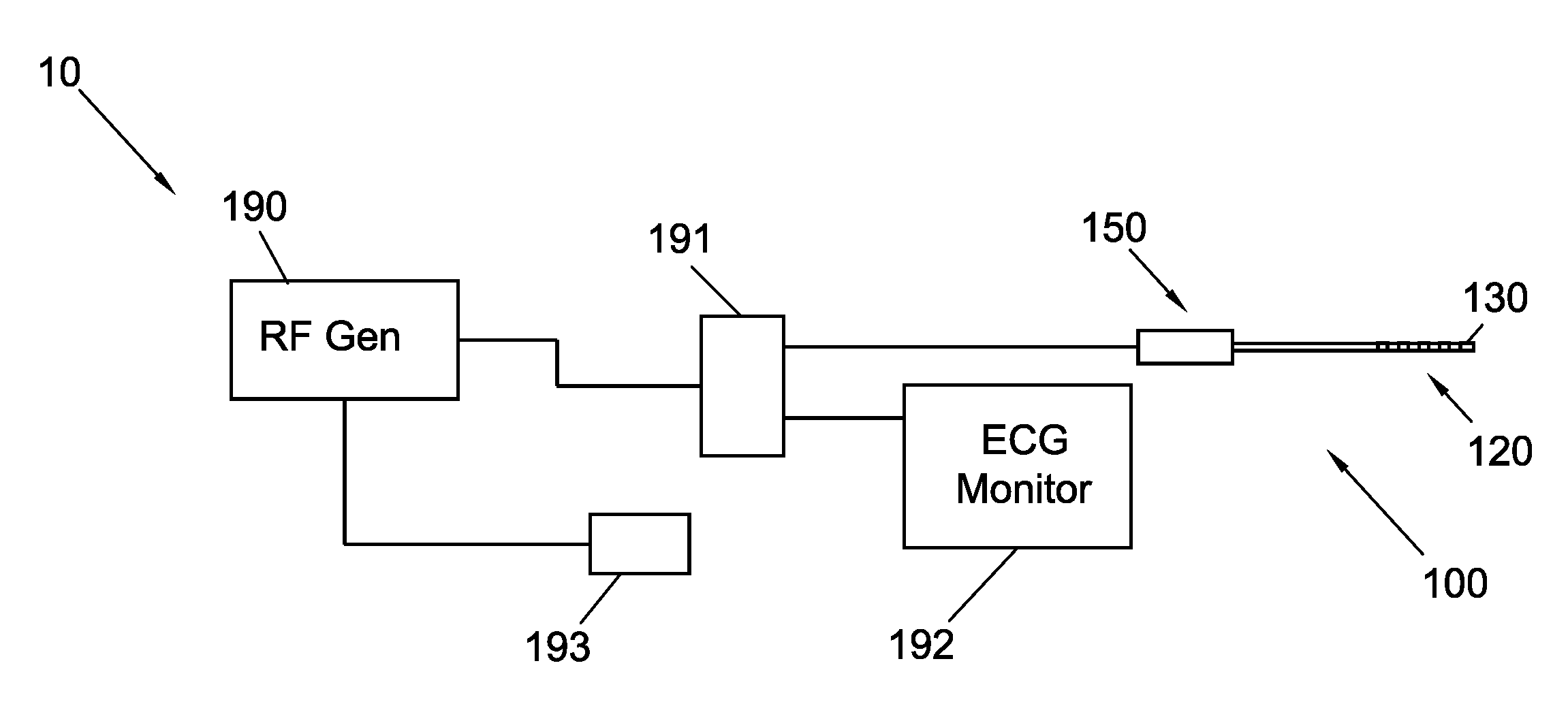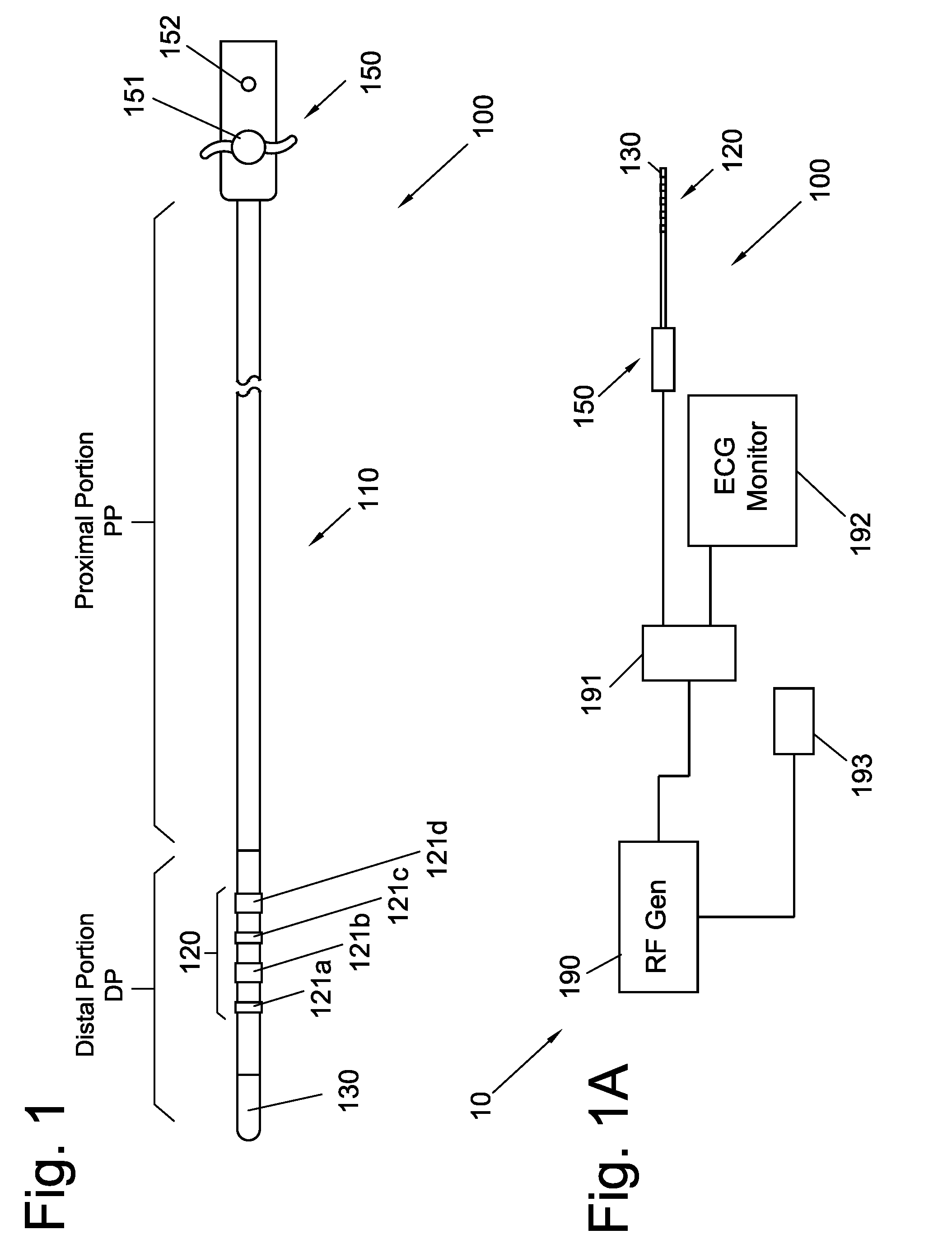Irrigated Ablation Catheter System and Methods
a catheter system and irrigated technology, applied in the field of irrigated ablation catheter system and methods, can solve the problems of ineffective blood pumping into the ventricle, lack of synchrony, organ malfunction, etc., and achieve the effect of improving patient health and increasing the surface area of the projecting fin
- Summary
- Abstract
- Description
- Claims
- Application Information
AI Technical Summary
Benefits of technology
Problems solved by technology
Method used
Image
Examples
Embodiment Construction
[0002]1. Field of the Invention
[0003]The present invention relates generally to ablation systems and methods for performing targeted tissue ablation in a patient. In particular, the present invention provides catheters which deliver radiofrequency (RF) energy that create safe, precision lesions in tissue such as linear lesions created in cardiac tissue.
[0004]2. Background of the Invention
[0005]Tissue ablation is used in numerous medical procedures to treat a patient. Ablation can be performed to remove undesired tissue such as cancer cells. Ablation procedures may also involve the modification of the tissue without removal, such as to stop electrical propagation through the tissue in patients with an arrhythmia condition. Often the ablation is performed by passing energy, such as electrical energy, through one or more electrodes and causing the tissue in contact with the electrodes to heat up to an ablative temperature. Ablation procedures can be performed on patients with atrial fi...
PUM
 Login to View More
Login to View More Abstract
Description
Claims
Application Information
 Login to View More
Login to View More - R&D
- Intellectual Property
- Life Sciences
- Materials
- Tech Scout
- Unparalleled Data Quality
- Higher Quality Content
- 60% Fewer Hallucinations
Browse by: Latest US Patents, China's latest patents, Technical Efficacy Thesaurus, Application Domain, Technology Topic, Popular Technical Reports.
© 2025 PatSnap. All rights reserved.Legal|Privacy policy|Modern Slavery Act Transparency Statement|Sitemap|About US| Contact US: help@patsnap.com



